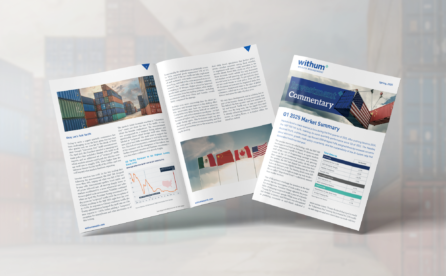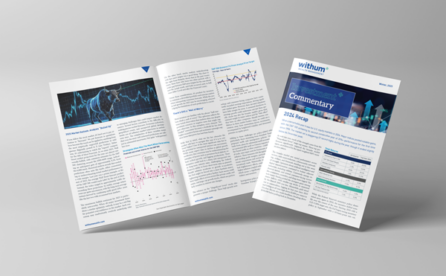PWM’s Fall Market Flashback 2015 from PWM Advisory Group on Vimeo.
PWM presents the Fall 2015 Market Flashback. In this video, we will discuss:
• Concerns about global growth and the possibility of a hard landing in China continue to weigh on investors. Volatility levels have spiked creating opportunities for long term investors.
• The inflation picture globally remains subdued, with the specter of deflation still not completely off the table.
• Valuation multiples quickly decreased in the third quarter bringing the equity markets to more attractive levels.
• By not raising rates in their September meeting, the Federal Reserve added to the uncertainty surrounding the first Fed rate hike since 2006. It is unclear whether a 2015 rate rise remains an option.
• We believe that US growth will continue to be positive albeit at a slow pace.
The Quarter in Numbers
Concerns about a Chinese slowdown and global growth in general hampered equity returns and elevated market volatility. The US equity market experienced its worst quarter since 2011 and its first significant selloff in more than four years. Extended stock market valuations, uncertainty related to the Federal Reserve’s first rate hike in nearly a decade and subpar economic growth attributed to the selling pressure. Sentiment indicators turned extremely negative, which from a contrarian perspective is a positive development for long term investors. As chart 1 illustrates, the long standing Investor’s Intelligence Bull/ Bear ratio is below 1, a level not seen since the debt ceiling crisis in 2011 and the financial crisis back in 2008.
China
As we wrote about in our last quarterly commentary, we are concerned about the degree to which a slowdown in China is affecting the broader global economy and financial markets. On top of disappointing recent economic and manufacturing data, China devalued its tightly controlled currency during August. This surprise devaluation exacerbated concerns about the pace of economic deceleration and sent global markets into a downward spiral. In the commodity markets, the impact of declining demand from China has been evident in the collapse of most commodity prices which have weighed on global trade. These factors (declining demand from China and lower global trade) are putting other emerging economies under strain. Commodity exporting economies such as Brazil, South Africa and Malaysia are suffering from a double whammy of lower commodity prices and a downbeat demand outlook from China; as a result their currencies have weakened significantly. The Chinese government has implemented monetary and fiscal policies that we believe will stabilize the rate of growth in China (with even the possibility of a rebound in the coming months).
Bottom line: Given the size of the Chinese economy and status as the largest consumer of raw materials, concerns about a serious slowdown have permeated through global markets. In our opinion, the Chinese government has instituted significant monetary and fiscal policies which should ease some of these pressures. In addition, beyond materials and energy, the Chinese economy is not highly integrated with the US and any meaningful slowdown should not have a significant impact on the United States economy.
The Federal Reserve and its Dual Mandate
The Federal Reserve did not raise rates in their September meeting citing concerns about recent global economic and financial developments (read China & stock market volatility) and the impact on inflation in the near term. During the meeting, the Fed also reduced their inflation expectations as well as their Fed funds forecasts. We cannot ignore the fact that the Federal Reserve has a dual mandate of price stability and employment. With maximum sustainable employment as one of their core mandates, we believe the recent drop in the unemployment rate to 5.1% should encourage the Federal Reserve to begin raising short term rates. In our opinion, keeping rates lower for longer will have little incremental effect on the structural problems in the labor force (i.e. the increase in part time workers created by Obamacare and the growing number of workers dropping out of the labor force with no incentive to seek employment due to an increase in disability and unemployment payments).
What About Inflation?
The Federal Reserve does not see its 2% inflation target being reached until 2018. According to Federal Reserve Chairwoman Janet Yellen, a stronger dollar and lower energy costs have been the main drivers of lower inflation, suggesting that consumer prices could steady in the months to come amid stabilization in oil prices. Wage growth, a key inflationary factor is still not evident in the job market and we believe the Federal Reserve would like to see higher wage growth before raising rates.
While you might have heard of Consumer Price Index (CPI), the Federal Reserve’s preferred measure of inflation is the PCE deflator. Unlike the CPI, the PCE deflator measures the changes in prices paid for all goods and services consumed in the economy, not just a standard basket of goods. Moreover, the PCE measures outlays by consumers, private insurance and government entities while CPI only measures the out of pocket expenses by the consumer. Both measures indicate subdued inflation, but in our opinion the pace of growth in the economy should increase and mild inflationary pressures could start to build in the not too distant future.
Deflationary pressures remain a global concern. In the European Union, the most recent inflation reading fell 0.1% on an annual basis. This was the first decline since the EU launched its own version of QE, increasing pressure on policy makers to counter the threat of deflation with more stimulus. Also, in Japan consumer prices fell in August for the first time in two years. Clearly, inflation (or lack thereof) will remain a headline topic globally.
Bottom line: The price decline in oil and a stronger dollar have helped keep inflation subdued. The Federal Reserve believes both factors will have less of an impact on inflation in the coming months (and we agree). In addition, slack in the economy is decreasing as a result of an improving labor market and inflationary pressures could begin to build in the coming months. The process of normalizing interest rates undertaken by the Fed should not be delayed much longer as growth remains positive and the unemployment rate sits at the lowest level seen since March 2008.
As always, we continue to advocate a disciplined investment approach that is consistent with your long term goals and risk tolerance. If your investment objectives or personal/financial situation have changed please reach out to us at your earliest convenience.






